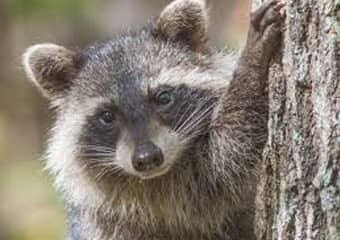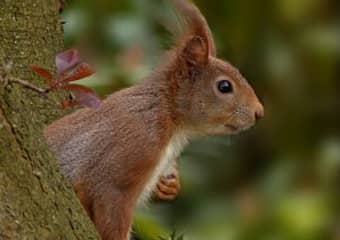raccoons are night time animals which means they sleep all day and only come out at night. raccoons living in residential areas often make their dens in attics, chimneys, garages, under and inside sheds, porches and under decks.
Baby Season In urban areas raccoons breed from January to April, gestation is eight to nine weeks, litter size averages from four to six young, which are mobile at seven to eight weeks old and are weaned by late summer the cubs may stay with the mother over the winter. Occasionally late births may occur in the mid summer.
What they eat raccoons eat berries, other fruits, nuts, grains, and vegetables. They also eat insects, eggs, poultry, rats, squirrels, small livestock, birds, fish, snakes, crawfish, worms, frogs, and mollusks. Additionally, raccoons will eat pet food, carrion, and human garbage.
Diseases raccoons are exposed to a large number of different infectious agents including bacteria, viruses, and parasites. Several of these infectious diseases are zoonotic. Veterinarians are faced with the diagnosis and treatment of wildlife including raccoons and need to be able to make the correct diagnosis as well as educate clients on the potential hazards associated with exposure to raccoons.
As notoriously poor climbers, skunks are attracted to low spaces under porches, sheds, garages, and back house additions without foundation, piles of wood, rocks, and debris.
Skunks can be carriers of rabies, and canine/feline distemper.
When angered or threatened skunks stamp their feet, hiss and growl. Their spray is mostly used for defense. The two glands under the tail generate the strong smelling musk. Then they stand on their front paws, tail against their back as they face their victim to spray with a mist or stream up to 3 meters (10ft) they are very accurate but can reach nearly 5 meters (16ft). Since skunks are twilight animals with excellent smell and hearing but poor vision, you’ll most likely encounter them at dusk.







